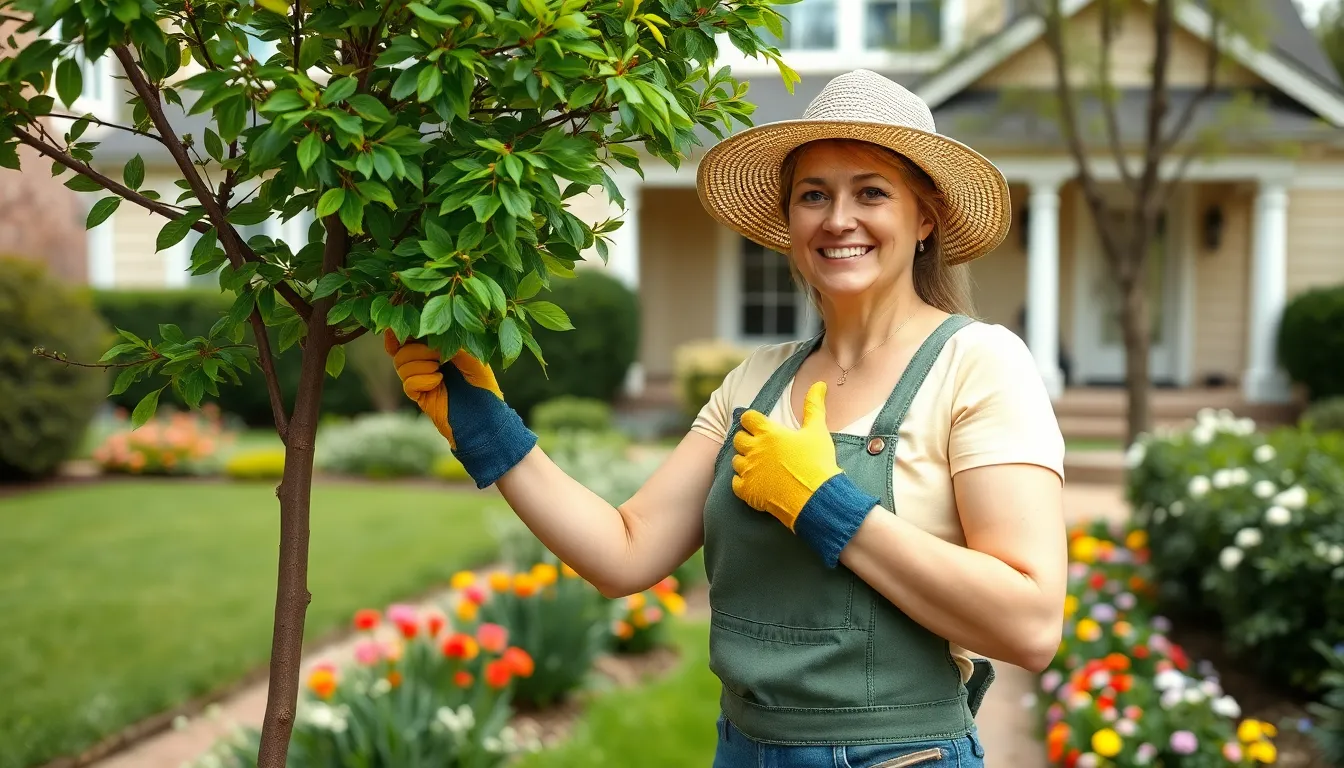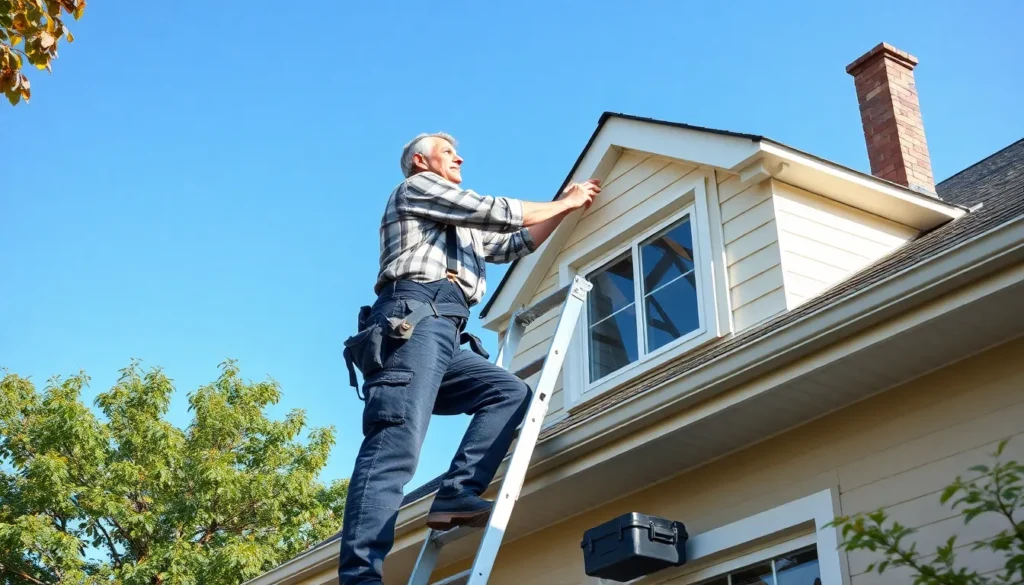Table of Contents
ToggleOwning a home is like having a pet—it’s all fun and games until something goes wrong. Just like a furry friend needs regular grooming and check-ups, your home craves a little TLC too. Imagine the disaster of finding a leaky roof in the middle of a rainstorm or discovering your furnace decided to take a vacation in the dead of winter. Yikes!
Importance Of An Annual Home Maintenance Checklist
An annual home maintenance checklist promotes proactive care, reducing costly repairs over time. Prioritizing routine tasks helps maintain a home’s value and comfort. A checklist serves as a visual guide, ensuring no critical areas are overlooked.
Ignoring upkeep duties can lead to severe problems, such as water damage or HVAC system failures. Completing regular inspections can reveal hidden issues early, allowing for timely fixes. This practice fosters a safer living environment by addressing potential hazards like mold or faulty wiring.
Additionally, an organized approach streamlines home management, saving time and effort throughout the year. Homeowners can optimize their schedules, making maintenance easier and more manageable. Enlisting professionals for specific projects ensures outstanding results while adhering to safety standards.
Tracking maintenance activities becomes simpler with a checklist, providing a historical overview of upgrades and repairs. Having clear records can aid in planning future renovations and inform potential buyers of the home’s care.
Homeownership entails responsibility, and consistent maintenance leads to long-term satisfaction and peace of mind. Families experience increased comfort and security when a home remains in good condition. Investing time annually proves beneficial, ultimately enhancing the living experience and safeguarding the property.
Seasonal Maintenance Tasks

Each season presents unique tasks that maintain the home’s structural integrity and efficiency. A proactive approach ensures the property remains in optimal condition year-round.
Spring Maintenance Tasks
Inspect the roof for damages from winter storms. Clean gutters to prevent blockages. Check the foundation for cracks and address possible drainage issues. Test the irrigation system for proper functionality. Trim trees and shrubs to avoid interference with power lines. Review exterior paint, addressing any peeling or chipping.
Summer Maintenance Tasks
Examine the air conditioning system for efficiency, replacing filters as necessary. Clean outdoor spaces, including patios and decks. Ensure that windows and doors seal properly to maintain energy efficiency. Test smoke and carbon monoxide detectors for optimal safety. Inspect and clean the pool, if applicable, ensuring chemical levels are balanced.
Fall Maintenance Tasks
Prepare the heating system for winter by scheduling a professional inspection. Clean the chimney and remove debris to prevent fires. Insulate pipes to prevent freezing in colder months. Store patio furniture and garden tools properly to avoid damage. Rake leaves consistently to maintain lawn health and prevent surface damage.
Winter Maintenance Tasks
Monitor heating efficiency, adjusting thermostats for optimal performance. Inspect insulation in attics and basements for warmth retention. Check for ice dams on the roof, clearing them to prevent water damage. Review emergency supplies, ensuring adequate provisions for winter storms. Test the sump pump to confirm it operates correctly.
Home Safety Checks
Prioritizing home safety is crucial for maintaining a secure living environment. Regular checks ensure that essential safety devices function properly.
Smoke Detector Testing
Testing smoke detectors should occur monthly. Homeowners need to press the test button to verify functionality and replace batteries at least once a year. Continuous chirping indicates low batteries, which require immediate attention. Smoke detectors should also get replaced every ten years for optimal performance. Effective smoke detectors minimize risks, providing timely alerts in emergencies.
Carbon Monoxide Detector Testing
Carbon monoxide detector testing is equally vital. Homeowners ought to test these devices weekly to confirm they operate correctly. It’s recommended to replace batteries annually, ensuring consistent monitoring. Carbon monoxide detectors typically last around five to seven years, after which replacement is necessary. Regular testing and timely replacements help prevent poisoning, safeguarding all occupants from this silent danger.
Systematic Inspections
Systematic inspections form a crucial aspect of maintaining a home. Homeowners can proactively identify issues that might lead to costly repairs.
HVAC System Inspection
An HVAC system inspection ensures optimal heating and cooling efficiency. Technicians should check all components, including the furnace, air conditioning units, and ductwork. Air filters must be replaced; clogged filters reduce efficiency and increase energy costs. Homeowners can also clean coils and inspect hoses for leaks. Regular maintenance enhances system longevity and reduces breakdowns during extreme weather, safeguarding comfort year-round.
Plumbing System Inspection
A plumbing system inspection prevents water damage and costly repairs. Homeowners should inspect visible pipes for leaks and corrosion. Drainage systems must be clear of clogs; regular snaking can prevent backups. Fixtures like faucets and toilets deserve attention; malfunctions can waste significant water over time. Seasonal inspections enhance system reliability, ensuring efficient water use and minimizing repair expenses.
Electrical System Inspection
An electrical system inspection identifies potential safety hazards. Homeowners can check for frayed wires or signs of overloaded circuits. GFCI outlets require testing to ensure they function properly, especially in moisture-prone areas. Additionally, maintaining proper lighting fixtures and verifying the condition of panels enhance safety. Annual inspections improve system efficiency and reduce fire risks, contributing to a safer living environment.
Exterior Home Maintenance
Exterior home maintenance ensures that a property remains safe and visually appealing. Focus on key tasks that enhance longevity and prevent costly repairs.
Roof and Gutter Cleaning
Inspecting the roof for damage is essential. Remove debris like leaves and branches to prevent blockages. A clean gutter system directs water away from the foundation, reducing the risk of flooding. Conduct a thorough cleaning twice a year, ideally in spring and fall. Check for missing shingles or signs of wear. Addressing small issues promptly prevents more extensive damage later. Consider hiring a professional for hard-to-reach areas to ensure safety and thoroughness.
Landscaping and Lawn Care
Caring for the lawn and landscaping contributes to overall curb appeal. Mow grass regularly and keep it at a healthy height to promote growth. Trim shrubs and trees to encourage proper airflow and sunlight. Fertilizing during the growing season helps maintain green, lush areas. Weeding prevents competition for resources, ensuring plants thrive. Mulching around flower beds retains moisture, reducing the need for frequent watering. Seasonal flower planting enhances beauty and supports local pollinators. Investing time in landscaping maximizes property value and aesthetic satisfaction.
Maintaining a home is an ongoing commitment that pays off in the long run. By following an annual home maintenance checklist, homeowners can prevent minor issues from escalating into costly repairs. This proactive approach not only preserves the home’s value but also enhances comfort and safety for all occupants.
Regular inspections and seasonal tasks ensure that every aspect of the home remains in optimal condition. From checking smoke detectors to cleaning gutters, each step contributes to a well-maintained environment. Ultimately, a systematic approach to home maintenance fosters peace of mind and improves the overall living experience, making it a crucial aspect of responsible homeownership.







